As the sizzle of your backyard barbecue wafts through the air, have you ever stopped to ponder what powers that delicious flame-grilled feast? Charcoal has been a long-standing champion in the realm of outdoor cooking, but it’s not without its drawbacks.
Most notably, its impact on our environment is less than appetizing. As an increasing number of people are looking for eco-friendly solutions in every aspect of their lives, exploring alternatives for charcoal in cooking has become a rather hot topic.
Enter a world where taste and sustainability come together beautifully. In this article, we take you on a flavorful journey to discover viable substitutes for charcoal that are not only kinder to Mother Nature but also elevate your culinary experience to new heights.
So let’s turn up the heat and delve into these exciting alternatives for charcoal in cooking – because who said saving the planet couldn’t be deliciously fun?
Propane or Natural Gas:
In the culinary universe, propane and natural gas are lighting up the stage as eco-friendly alternatives to charcoal. These gases not only cater to our environmental concerns but also bring in a dynamic twist to your cooking experience.
The unique benefits of using either propane or natural gas for cooking include:
– Precision: These fuels offer more control over temperature, allowing you to delicately simmer your concoctions or fiercely sear your steaks with remarkable precision.
– Efficiency: Natural gas and propane stoves heat up instantly, saving time compared to traditional charcoal grills.
– Cleanliness: They emit fewer airborne pollutants, ensuring a cleaner cooking environment which directly impacts the taste and quality of your food.
Furthermore, while both these gases offer compelling advantages, there’s an ongoing debate on which one towers above. Propane holds more energy per cubic foot than natural gas.
However, natural gas is less expensive, readily available through utility lines eliminating the need for storage tanks like in case of propane. But primarily it boils down to personal preference and availability in your area.
Shifting from charcoal towards these efficient fuels can redefine home cooking; it’s not just about preparing food but creating an enriching experience in harmony with nature around us!
- Pros: Convenient, clean-burning, and provides consistent heat.
- Cons: Requires a gas grill or stove.
Electric Grill or Stove:
One intriguing alternative you should consider when looking for replacements for charcoal in cooking is the electric grill. The electric grill, unlike the traditional charcoal and stove, exudes a modernist flair to your kitchen setup while offering several advantages that promise to elevate your cooking experience.
A prominent benefit of electric grills is their convenience. These wonders of technology operate on electricity and therefore rid yourself of all the messiness associated with charcoal or even a gas stove.
At just a flicker of a switch, you’re ready to cook! Imagine sidestepping all the time-consuming procedures like getting coals burning or cleaning up ash afterwards.
- – Easy temperature control: Electric grills come with adjustable heat settings ensuring your food cooks evenly.
- – Health friendly: With drip trays catching excess grease and fat, it encourages healthier meals.
- – Safe indoors: Unlike charcoal grills, there isn’t any smoke hence safe for indoor cooking scenarios.
Let’s not forget about the traditional stove though! It may lack flashy features but might be preferable if you love playing around with heat intensity quickly. A good old reliable gas/electric stove allows precision when whirling those pots and pans on multiple burners.
While an electric grill guarantees simplicity and cleanliness, opting for an advanced kind of stovetop – induction cooktop – also provides similar benefits without detaching completely from classic stoves feel.
In summary, both electric-grill and modern stoves are each highly impressive alternatives to conventional forms of cooking.
- Pros: Easy to use, no open flame, and suitable for indoor use.
- Cons: May lack the smoky flavor associated with charcoal.
Wood Pellets:
As we venture into the future of sustainable culinary techniques, wood pellets have emerged as an excellent alternative fuel source. Also referred to as ‘Biofuel,’ these tiny nuggets of compressed sawdust are winning hearts and grills due to their explosion in flavor, efficiency and more importantly, their lesser carbon footprint compared to charcoal.
One attribute of wood pellets that sets them apart is how they’ve revolutionized consistency in heat output- an area where charcoal often falls short. Imagine getting the same consistent temperature throughout your cooking duration; this is what wood pellets gift you!
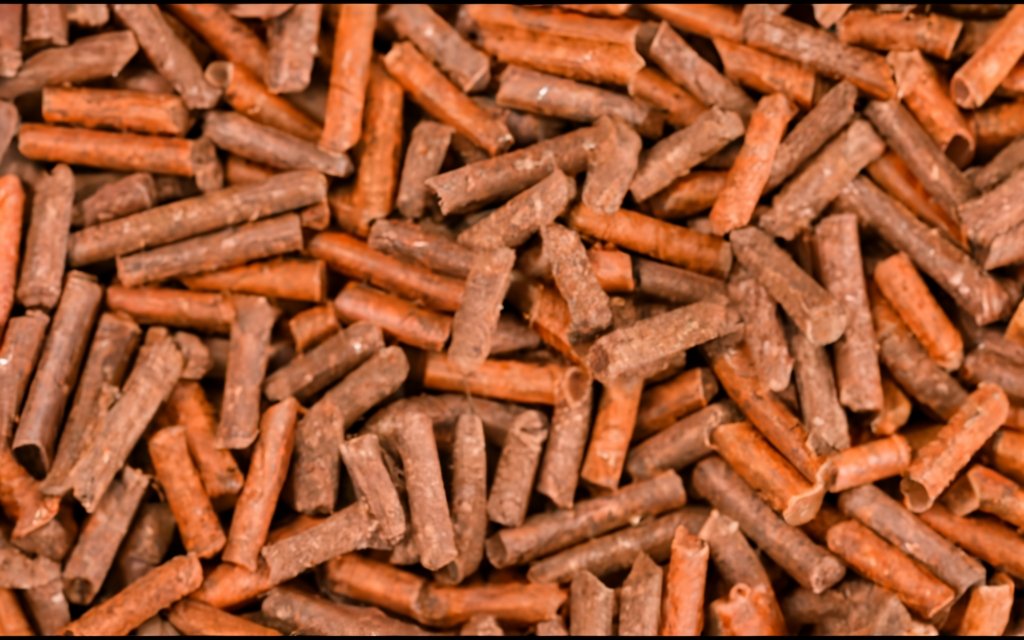
These energy-dense fuels offer a stable burn rate without unexpected flares or temperature dips – invaluable when you’re cooking up a storm!
- • Consistent heat: Wood pellets promise a more reliable cook, with even temperature control.
- • Versatility: They are available in range of flavors like apple, cherry or hickory
- • Environmentally friendly: Comprised mainly of sawdust waste from lumber industries; they generate less emissions.
Next time you fire up the grill, why not consider swapping your regular charcoal for wood pellets? You’ll be doing both your food and environment a favor!
- Pros: Imparts a woodsy flavor, similar to charcoal. Suitable for pellet grills.
- Cons: Requires a specific type of grill, and the flavor might not be as intense as traditional charcoal.
Wood Chips or Chunks:
Venturing beyond the realm of traditional charcoal, wood chips and chunks introduce a level of complexity to your cooking that’s simply unmatched.
They are not just an alternative heat source, but also a unique tool in crafting exquisite flavours. Using these can elevate everything from homemade pizza to exquisite slabs of barbecue ribs.
Wood chips and chunks come from various types of trees like hickory, applewood, mesquite or oak offering distinct flavors. The choice between chips or chunks is determined by what you’re cooking, how long it will take and the intensity of flavor you want:
– Wood Chips: Best for quick cooking foods as they light up fast but also burn out quickly; smoke flavour is mild.
– Wood Chunks: Ideal for slow-cooking dishes; produce more smoke over extended periods; result in intense smoky flavour.
So next time you plan on firing up your grill or smoker, consider ditching those bags of regular charcoal for some intriguing wood chips or robust chunks. Not only will the ambiance be more inviting,the culinary outcome will be uniquely satisfying.
- Pros: Adds smoky flavor to the food. Can be used in a charcoal grill or with a smoker box on a gas grill.
- Cons: May require soaking before use, and the flavor intensity can vary.
Briquettes:
The shift towards sustainable and efficient energy sources for cooking has seen Briquettes taking center stage. These compacted block-like forms of biomass, such as charcoal dust, are not just eco-friendly but also a highly reliable fuel source with efficiency rates soaring up-to 40% higher than traditional charcoal.
Overlooked in many conversations, Briquettes create an economical way to cook while simultaneously tackling health issues associated with indoor air pollution from the use of conventional fuels.
The process of making Briquettes involves compressing organic materials into small dense blocks which produce more heat due to their high density. This offers users significant savings on fuel consumption over the long term:
- • The lifespan of briquettes is considerably longer compared to traditional wood or lump charcoal.
- • They reset the clock on waste management by turning agricultural residue into valuable resources.
- • Briquettes maintain a consistent temperature helping with even cooking and reducing constant heat adjustments.
Appealing isn’t it? Well, here’s another benefit – Did you know that by opting for this alternative contends seriously against deforestation? Instead of cutting down trees for firewood or charcoal production, we’ll be recycling agricultural waste – a brilliant solution indeed!
Hence, adopting briquette usage is like hitting two birds with one stone – combatting both climate change and promoting economic growth concurrently.
- Pros: Similar to charcoal but often made with different materials. Can be used as a substitute in some recipes.
- Cons: May have additives that affect flavor, and the burn characteristics can be different.
Pellet Tube Smoker:
Today’s home cooks are continuously seeking innovative ways to make their food not just edible, but delectable. One outstanding alternative for charcoal in grilling that has been making waves lately is the pellet tube smoker.
This device offers a unique method of achieving that sweet, smoky flavor we all crave without the need to handle dirty charcoal or wood chunks.
Unlike traditional forms of BBQ, pellet tube smokers complete your outdoor cooking with precision and ease. They stand out due to their cylindrical design which allows for an even distribution of smoke, infusing your cuisine with optimum flavor while retaining its moistness. You get consistent temperatures without fear of flare-ups; isn’t this every pitmaster’s dream?
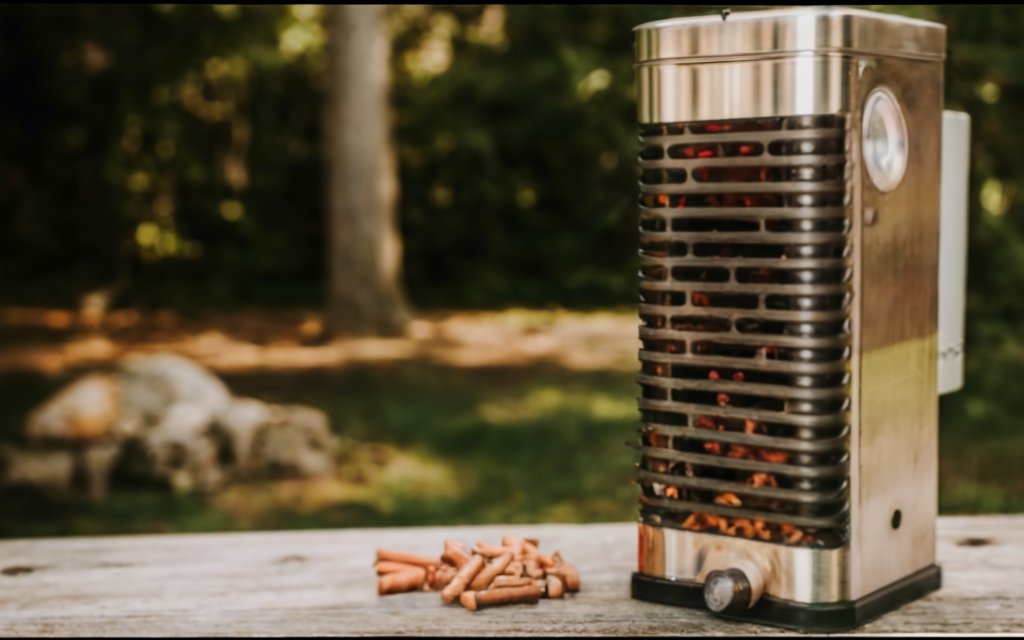
Consider these key advantages:
– Precision Temperature Control: With a pellet tube smoker, exercising control over cooking temperature is as easy as pushing a button!
– Broad Variety Of Flavors: Pellets come in many different wood varieties such as oak, hickory or mesquite each lending a distinct touch.
– Smoke On The Go: Their portable size makes them perfect for tailgate parties or camping trips.
Liven up your family BBQs with the rich aroma and taste that emanates from this progressive tool – the pellet tube smoker!
- Pros: Adds smoky flavor to gas grills. Filled with wood pellets and placed on the grill.
- Cons: Requires a gas grill, and the intensity of smoke may vary.
Lump Hardwood Charcoal:
There’s a growing interest among cooking enthusiasts and professional chefs in the use of Lump Hardwood Charcoal. Does it elevate the grilling game? Absolutely! This variety of charcoal traces its origin to prehistoric cooking fires – it’s pure, untainted wood turned into shards of scarily black carbon.
Unlike regular briquettes often laced with additives, Lump Hardwood Charcoal impresses with its unadulterated nature. Here are some noteworthy features:
- – It burns hotter than standard charcoal or gas.
- – Being all-natural, it imparts an authentic smoky flavor to your meats.
- – Variable chunk size allows for versatile grilling opportunities.
Given these advantages, there’s no surprise that this old-school player has roared back into popularity. Lump Hardwood Charcoal doesn’t just promise a quality cook; it assists in delivering an unreplicable flavor profile—giving you an indulgent culinary experience straight from the ember heart. So why hesitate? Embrace the change and let your taste buds delve into history!
- Pros: Similar to traditional charcoal but made from hardwood. Burns hotter and imparts a distinct flavor.
- Cons: Can be more expensive than traditional charcoal.
Ceramic Briquettes:
Ceramic briquettes are incredible alternatives to charcoal when it comes to cooking. These small, compact pieces derive from a highly effective material that has significant heat retention capacity.
By using Ceramic Briquettes, your food will not only cook evenly but also maintain a consistent temperature throughout the entire grilling process which bestows an explosion of flavors to your grill recipes.
• They offer superior heat distribution: One key advantage of Ceramic Briquettes is their ability to distribute heat evenly across the grill. This makes them ideal for all types of foods whether you’re searing steaks or roasting veggies.
• Long lifespan and durability: Another remarkable aspect about these gems lies in their longevity and resilience. They can be used repeatedly over time as they do not disintegrate like charcoal does after you light it up.
Feel the difference while cooking with ceramic briquettes! Not only is this a more energy-efficient method, but it also reduces instances of flare-ups giving you a safer grilling environment. Thus making them not just innovative substitutes for its conventional counterparts but indeed an upgrade, promising delightful culinary adventures ahead!
- Pros: Provide a similar grilling experience to charcoal. Can be used in gas grills.
- Cons: May require additional care and maintenance.
Alcohol or Charcoal Gel:
When it comes to cooking fuels, alcohol and charcoal gels hold significant sway in the choices available. Nowadays, individuals are progressively opting for these two mediums due to their clean-burning properties and profound influence on heat distribution.

Alcohol fuel is renowned for its odorless and soot-free combustion, rendering it an unbeatable choice for indoor cooking or camping scenarios where pristine cleanliness is paramount. Beyond this, alcohol effortlessly delivers a consistent flame throughout the process making temperature management easier for chefs.
– Quick ignition.
– Consistently steady flame.
– Ideal for indoor usage due to smokeless combustion.
On the other hand, there’s charcoal gel – an excellent alternative that offers a unique blend of benefits. Primarily preferred for grilling, charcoal gel amplifies flavors and gives your food an irresistible smoky aroma that’s hard to replicate by any other means. Its slow and steady burn makes it optimal for long barbecue sessions or slow roasting.
– Bestows food with a smoky flavor
– Slower burning rate perfect for lengthy grill sessions
– Simple storage requirements
Both these fuels have their own distinctive features which influence their application in different cooking scenarios. Choosing between them ultimately boils down to your personal preference, culinary needs and specific use case scenarios.
- Pros: Suitable for tabletop grilling. Clean-burning and easy to control.
- Cons: May not provide the same intense heat as traditional charcoal.
Indoor Grills:
Indoor grills have quickly become the solution for those who cherish a good BBQ but are constrained by weather or space limitations.
Unlike traditional charcoal grills, they create little smoke, ensuring that your apartment’s fire alarm system remains untroubled while still delivering mouth-watering grill marks and robust flavors typically associated with outdoor BBQs.
Is the taste comparable? you might ask. With advancements in technology, indoor grills have been designed to mimic the heat distribution and smoking effects of an outdoor grill.
High-quality models even incorporate more precise temperature controls than their outdoor counterparts, allowing you to masterfully cook steaks at just the right temperature or achieve perfect golden roast chicken skin.
* Indoor grills are compact yet capable of delivering flavorsome results.
* They come in different types: open grates (similar to traditional grills), contact models (like panini presses), and smokeless ones equipped with dedicated smoke extraction technology.
* Expect less mess due to drip-pan designs catching oils and other food deposits common during cooking.
Endearingly also is their versatility – be it delicate salmon fillets, vegetable skewers, pressed sandwiches—they handle it all splendidly!
Testify this barbecue marvel; bring home an indoor grill today for a fuss-free culinary delight that doesn’t compromise on flavor!
Indoor Grilling—there’s indeed nothing quite like it!
- Pros: Electric grills designed for indoor use. Convenient and easy to clean.
- Cons: May not achieve the same smoky flavor as outdoor grilling.
Hibachi or Portable Charcoal Grill:
Switching from conventional cooking methods to grilling can be a delightful experience, particularly when it comes to hibachi and portable charcoal grills – two of the most coveted barbecue accessories among cooking enthusiasts.
Not only do they promise mouthwatering smoky flavors but also significant convenience and versatility. Whether you’re planning a family cookout or a camping trip with friends, these little wonders make sure your hunger pangs are taken care of, no matter where you are.
Here’s what makes these devices special:
• **Hibachi Grills**: Derived from the Japanese ‘fire bowl’, Hibachi grills promise an authentic East Asian barbecuing experience on-the-go. Its compact design coupled with heat-retaining materials like cast iron make them highly efficient for quick-grilling meats and veggies.
One could argue there is an art to mastering hibachi grilling – controlling temperatures through adjustable air vents, understanding the placement of foods considering how fast they cook or quite simply perfecting those teppanyaki-style flipping skills!
• **Portable Charcoal Grills**: If you crave that classic smokey flavor in your food, look no further than portable charcoal grills! These units capture the allure of traditional open-fire cooking within practical designs suitable for modern lifestyles. The beauty lies in their simplicity – just add charcoal bricks, light them up and get your grill fest going!
- Pros: Portable and compact. Uses less charcoal and can be suitable for small gatherings.
- Cons: Limited cooking space compared to larger grills.
Infrared Grills:
Exploring new avenues in cooking? Look no further than the Infrared Grills – your innovative and efficient alternative to charcoal. These grills use propane or natural gas as fuel, turning it into infrared radiation which is then used to cook food. It not only drastically reduces the cooking time but also ensures that the food retains valuable nutrients often lost during conventional cooking methods.
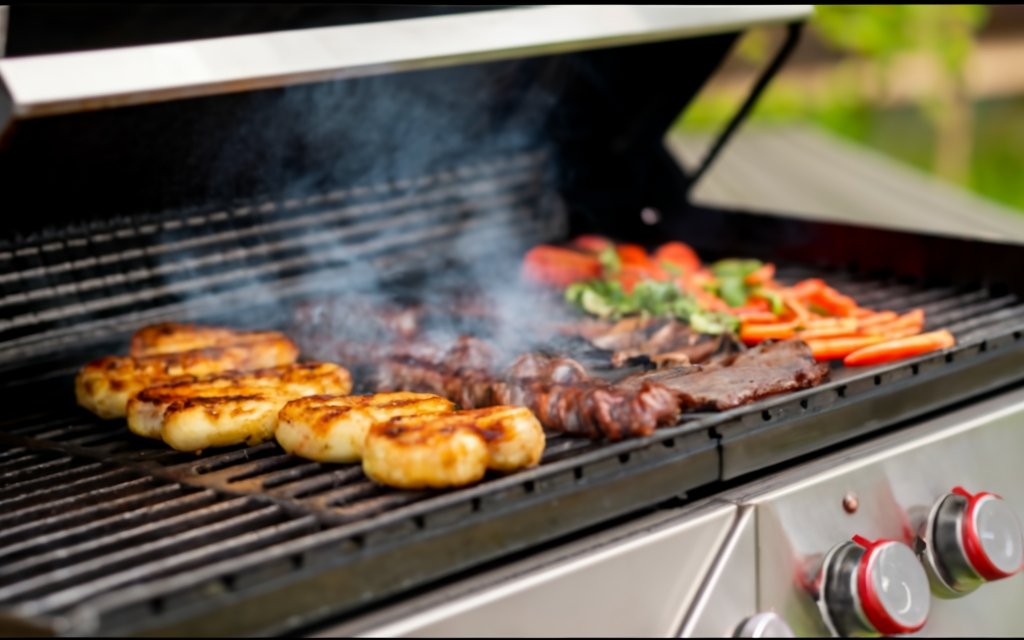
In contrast to traditional gas or charcoal grills, Infrared grills offer an even heat distribution ensuring perfectly cooked food every time. There is a reduced risk of flare-ups since there’s no open flame, providing a safer grilling option.
Furthermore, these high-performing machines have gained popularity among professional chefs and home cooks alike for their ability to sear meat without drying it out – leaving you with perfect steaks each time!
- • Rapid pre-heating: No more waiting around for charcoal to get ready.
- • Improved energy efficiency: They consume less fuel compared to other grill technologies.
- • Consistent temperature control: Thanks to its radiant heat system.
- • Reduced smoke and flare-ups: Providing a healthier and safer environment.
For those wanting impeccable taste with swift action and better precision over their grilled delicacies, Infrared Grills are indeed poised as an attractive culinary tool.
Beyond its functionality, these units lend themselves effortlessly into any outdoor setting due their compact design making them an aesthetically pleasing addition poising luxury and convenience side by side.
- Pros: Uses infrared technology for even heating. Can be fueled by propane or natural gas.
- Cons: May not provide the same smoky flavor as traditional grills.
Heat Beads:
Heat beads have emerged as an efficient and reliable alternative to traditional charcoal in cooking. They are essentially compact balls made out of coconut shells, peat or sawdust.
The interesting part is that they burn hotter and last longer compared to the average charcoal. This enables you to sustain cooking temperatures for a prolonged period thereby enabling you to slow-cook your food easily.
Notably, these heat beads are eco-friendly as they produce less smoke thus minimizing air pollution. Plus, their high combustion efficiency results in less ash production, hence simpler cleanup process:
- – Heat beads retain their heat (around 350 degrees) for at least three hours.
- – Their uniform size promotes consistent heating and even distribution throughout the grill.
When looking for ways to spruce up your cook-out experience while staying conscious of environmental impact, heat beads should be top on your list! They promise a perfect balance between sustainable cooking while efficiently promoting delicious outcomes every time you fire up the grill.
- Pros: Similar to charcoal but made from coconut shells. Burns hotter and longer.
- Cons: Availability may vary depending on location.
Electric Smokers:
Farewell, grueling prep work and control struggles; say hello to the pioneering cooking method – Electric Smokers. This innovative technology ensures your desired smoky flavor without the hassle of managing charcoals or pouring endless bags of wood chips.
Become a BBQ maestro overnight with electric smokers that offer precision digital controls for temperature and smoke levels. These bad boys are convenient to set up and require less attention compared to conventional charcoal grills, freeing you up to focus on creating sides, tossing salads, or just chilling out with friends!
- – Quick assembly
- – No dealing with hard-to-light charcoal
- – Automated controls for a perfect cooks every time
- – More freedom during your grilling sessions
Bid goodbye to traditional methods encased in extensive tending and welcome efficiency twinned with the flavorsome smokiness!
- Pros: Designed for slow smoking. Easy to use and control temperature.
- Cons: May not achieve the same searing effect as grilling.
Oven Broiling:
Understanding the art of oven broiling is akin to uncovering a secret power your kitchen has been holding back all this time! This technique marks a welcome deviation from traditional charcoal grilling, presenting an ideal alternative for food lovers who pine for the charred taste and appearance but want to dodge the hassle of setting up a charcoal pit.
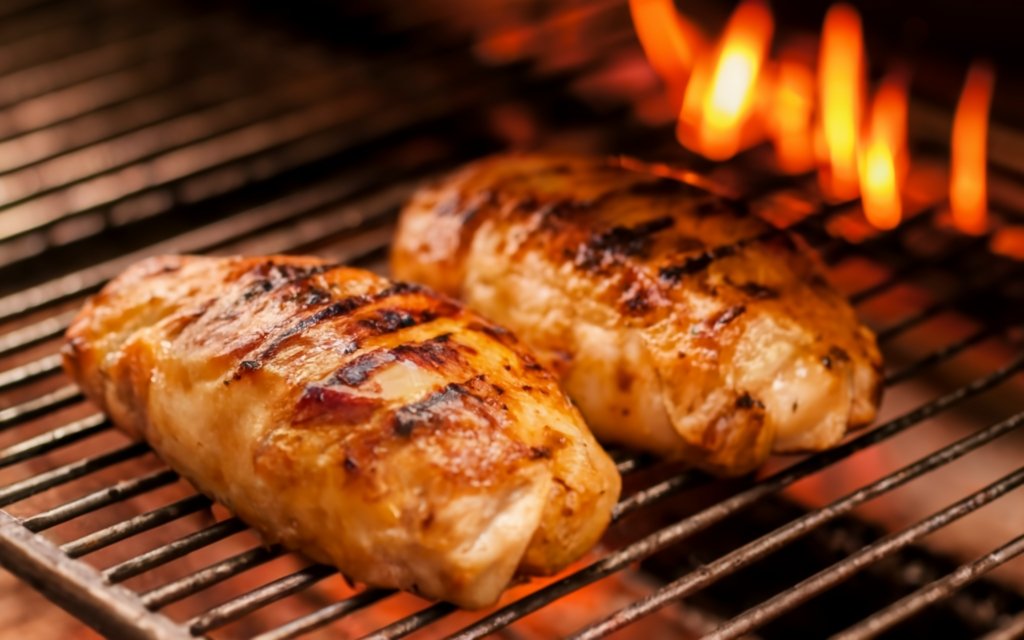
Unlike conventional baking, where heat slowly surrounds food from all sides in your oven, broiling uses direct heat from above. Imagine it as an upside-down grill within your enclosed oven that radiates intense heat on your steak or vegetables creating beautiful sears without demanding any tedious setups.
- – Accessibility: The fact that you don’t need any special equipment or setup – just your everyday kitchen oven.
- – Control Over Temperature & Time: You have better control over cooking time and temperature compared to using charcoal.
- – Versatility: From meat cuts to veggies – anything can be broiled to perfection!
My dear homemakers and culinary enthusiasts, gone are days when we had no choice but to deal with messy residues left behind by grilling coal.
With oven-broiling at hand, keeping flavors intact while cooking healthy couldn’t get any easier! Show some love to this innovative method of indoor roasting and say goodbye to those notorious blackened pots.
- Pros: Indoor cooking option. Uses the broil setting in an oven for high-heat cooking.
- Cons: Lacks the smoky flavor associated with outdoor grilling.
Halogen Ovens:
Exploring the world of halogen ovens opens up a horizon filled with convenient, healthy and energy efficient cooking. These versatile cooking appliances function by using a halogen bulb for generating heat and a fan to circulate the hot air around the oven.
This innovative design streamlines cooking by ensuring evenly distributed heat, thus retaining flavors while cutting down on meal preparation time significantly.
When it comes to benefits that appeal directly to users, halogen ovens have several compelling points:
– Energy Efficient: They consume less energy than traditional ovens as they preheat faster and cook food in less time.
– Healthier Cooking: Their superior heating method helps reduce the amount of oil needed to prepare meals.
– Versatility: Whether roasting, grilling or baking, these multipurpose wonders accommodate all culinary needs.
– Space Saver: Compact designs make them well-suited for smaller kitchens or limited countertop areas.
By offering an effective solution that caters both to speedy cook times and health-conscious decisions without compromising taste, halogen ovens stand as a remarkable alternative in contemporary home-cooking methods.
- Pros: Uses infrared technology to cook food quickly. Suitable for grilling and roasting.
- Cons: Limited cooking space and may not provide the same flavor as traditional grills.
Solar Ovens:
Solar ovens are increasingly gaining recognition as a viable alternative to charcoal. There’s something inherently fascinating about harnessing the power of the sun to cook food, isn’t there? It almost feels like magic, but it’s pure science and innovation at works – our clean, renewable solar energy put into efficient use in our daily lives.

Besides its eco-friendly appeal, Solar Ovens can drastically reduce household expenses on fuel for cooking. With an average lifespan of 10 to 20 years for many models, these unique appliances are not only a one-time investment but also play a significant role in reducing deforestation caused by charcoal extraction.
- • Cost-effective: Once installed solar ovens require no additional expenditures on fuel making them remarkably economical.
- • Eco Friendly: Solar cooking helps reduce deforestation and emission of greenhouse gases.
Solar ovens offer unexpected culinary benefits too. They cook food at lower temperatures over long periods resulting in meals that’re moist and flavorful with less risk of burning or overcooking. Be it baking bread or slow-cooking a stew; your solar oven could become your new favorite kitchen gadget!
So while keeping sustainability front-of-mind let us together broaden our horizons beyond conventional cooking methods offering Mother Nature a well-deserved breather!
- Pros: Uses solar energy for cooking. Environmentally friendly and suitable for slow cooking.
- Cons: Requires sunlight, and cooking times can be longer.
Brick Oven:
If you’re thinking about alternative cooking methods to charcoal, the timeless appeal of a traditional brick oven should not be overlooked. Beyond just baking perfect crust pizzas, breads and roasting meats with an enticing smoky flavor, a brick oven elevates your cooking experience all while being friendly to our environment.
• Economical and Eco-friendly: Brick ovens require less fuel compared to charcoal grills once they’ve reached their optimal temperature, making them more energy efficient on the whole. They also produce less air pollution than traditional charcoal barbecues.
• Heat Retention: The thermal mass of a brick oven is capable of storing substantial heat which allows consistent slow cooking for hours even after the fire has been extinguished.
• Unparalleled Taste: The unique flavors achieved in food cooked in a brick oven is unmatchable. It offers direct heat cooking and smoke flavor enhancement which are hallmarks for master chefs globally.
Turning away from conventional charcoal use in cooking doesn’t mean skimping on taste or versatility; it means embracing old-world techniques like brick ovens that successfully combine sustainability with gourmet results. Not only do you reduce your carbon footprint, but you also unlock an entirely new culinary world where tradition meets innovation.
- Pros: Traditional method for baking and roasting. Imparts a unique flavor to pizza and other dishes.
- Cons: Requires a dedicated oven and space.
Camping Stove:
Opting for a camping stove as an alternative to charcoal for cooking is an investment with multiple paybacks. Far more eco-friendly and convenient, they impart the same charm of roasting marshmallows or grilling steaks but without all that smoke and ash mess.
Camping stoves provide several glaring advantages:
• Efficiency – They have remarkable fuel efficiency compared to traditional charcoal setups.
• Portability – Most camping stoves are compact and easy to carry on your outback adventures.
• Simplicity – With easier ignition systems they offer less hassle in starting up a fire compared to traditional charcoals.
• Eco-friendly – Emitting less CO2, these are a greener choice for nature enthusiasts.
Boundless culinary possibilities lie at your fingertips once you get savvy with this device. So whether you want to upgrade your backyard barbecuing experience or wish to cook under the stars while backpacking, the camping stove ushers in an era of environmentally sound outdoor culinary exploration.
- Pros: Portable and uses various fuels such as propane, butane, or wood.
- Cons: May not provide the same grilling experience as larger outdoor grills.
Haybox Cooker:
Haybox Cooker is an innovation that takes cooking back to simplicity and sustainability. This low-tech device allows you to cook meals with minimal fuel use, proving that cutting edge isn’t always better – sometimes the best alternatives are the ones we’ve seemingly left behind.
Haybox Cooker works on the principle of retained heat where your cooked food continues to cook in its own heat after initial boiling.
What sets Haybox Cooker apart from charcoal and other methods is its efficiency and versatility. The cooker can be used regardless of weather conditions unlike solar powered options, making it dependable year-round.
Moreover, you leave a smaller carbon footprint when using this cooking option because it uses residual heat – thus saving energy without compromising your culinary exploits:
- – Ensures slow cooking which enhances flavors.
- – Makes outdoor cooking easy and eco-friendly.
- – It has no emissions like those associated with charcoal.
Undoubtedly, adopting a Haybox Cooker into your routine will take some adjustment but once familiar, you’ll be surprised at how practical this old-school method is in providing hot meals while preserving environment healthiness!
- Pros: Energy-efficient cooking method. Food is partially cooked on a stove and then insulated to finish cooking.
- Cons: Not suitable for grilling but an alternative for slow cooking.
Conclusion.
In conclusion, the exploration and adoption of alternatives to charcoal for cooking is not only an environmental necessity, but also a step towards improved health and financial sustainability.
Alternative options such as solar cookers, electric stoves, biogas and clean cookstoves offer promising solutions, reducing both deforestation and respiratory diseases caused by inhaling smoke from charcoal. They are also more cost-effective in the long run compared to conventional charcoal.
While change may be challenging due to deeply rooted cultural practices and habits, education and awareness-raising initiatives can play a significant role.
It’s time we all join hands in promoting these healthier, cleaner and more sustainable cooking alternatives for the betterment of our planet and future generations. You should read anothe article i wrote about >>>> Charcoal Alternatives For smoky Flavour to learn more.
I am commitment to crafting compelling narratives and delivering insightful content continues to inspire and inform readers across various platforms. Explore her articles on AlternativesZone.com and FactAfterFact.com to experience a rich tapestry of knowledge and discovery. Here I Analyze and Test the products and services together with my team before we recommend them to our users. Nice Reading Here!

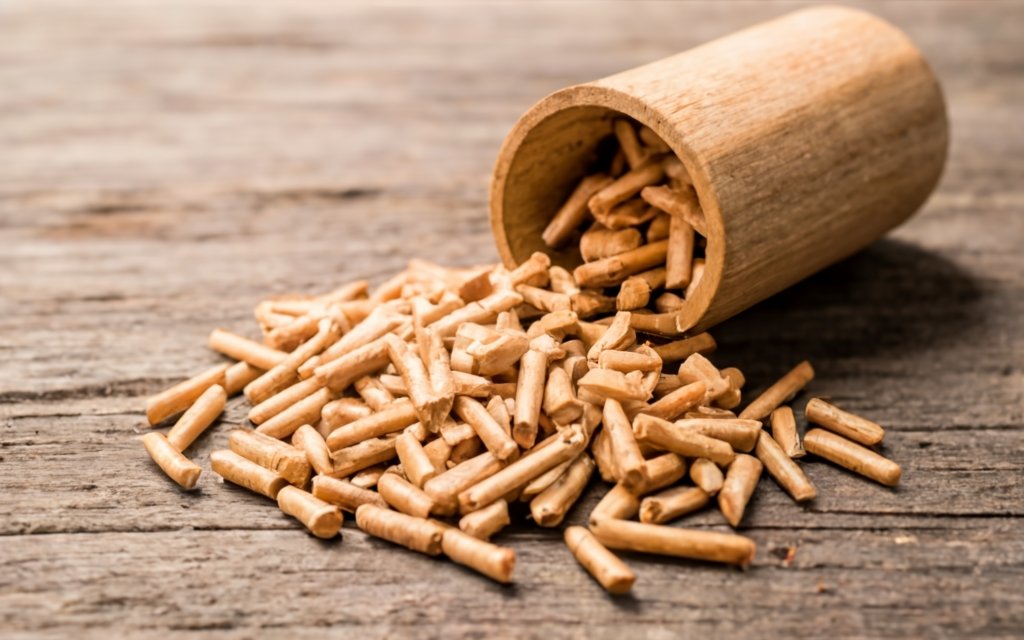
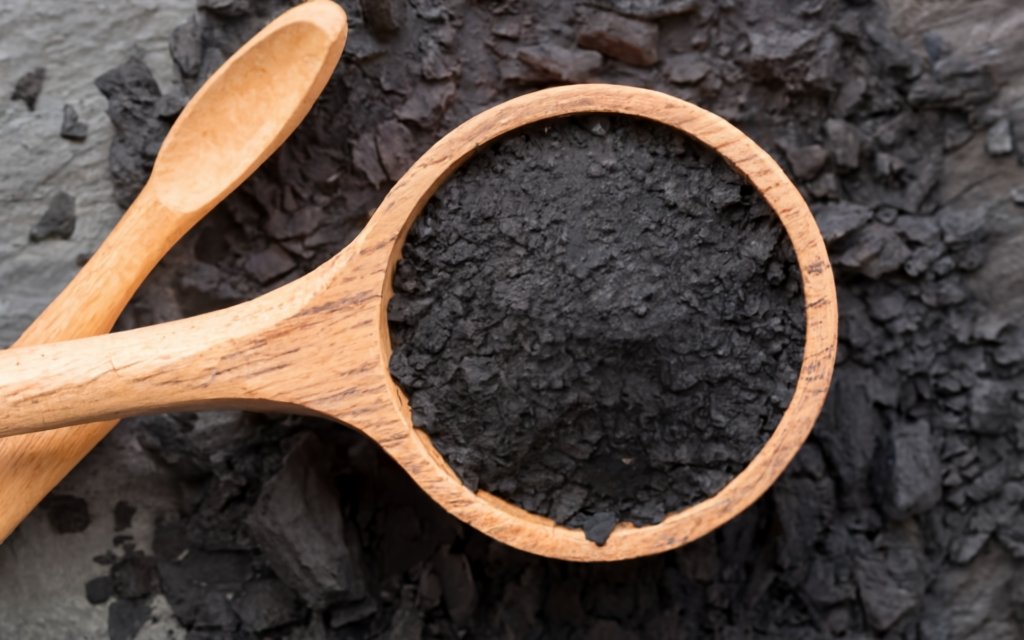


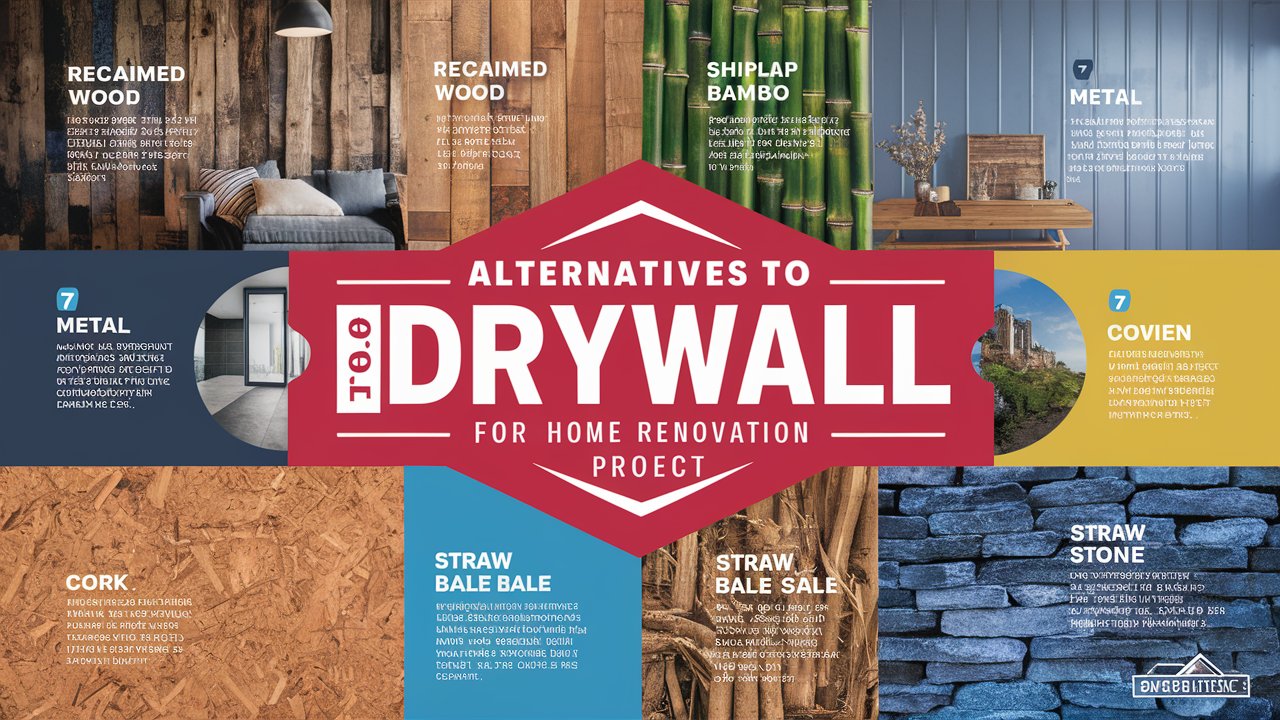
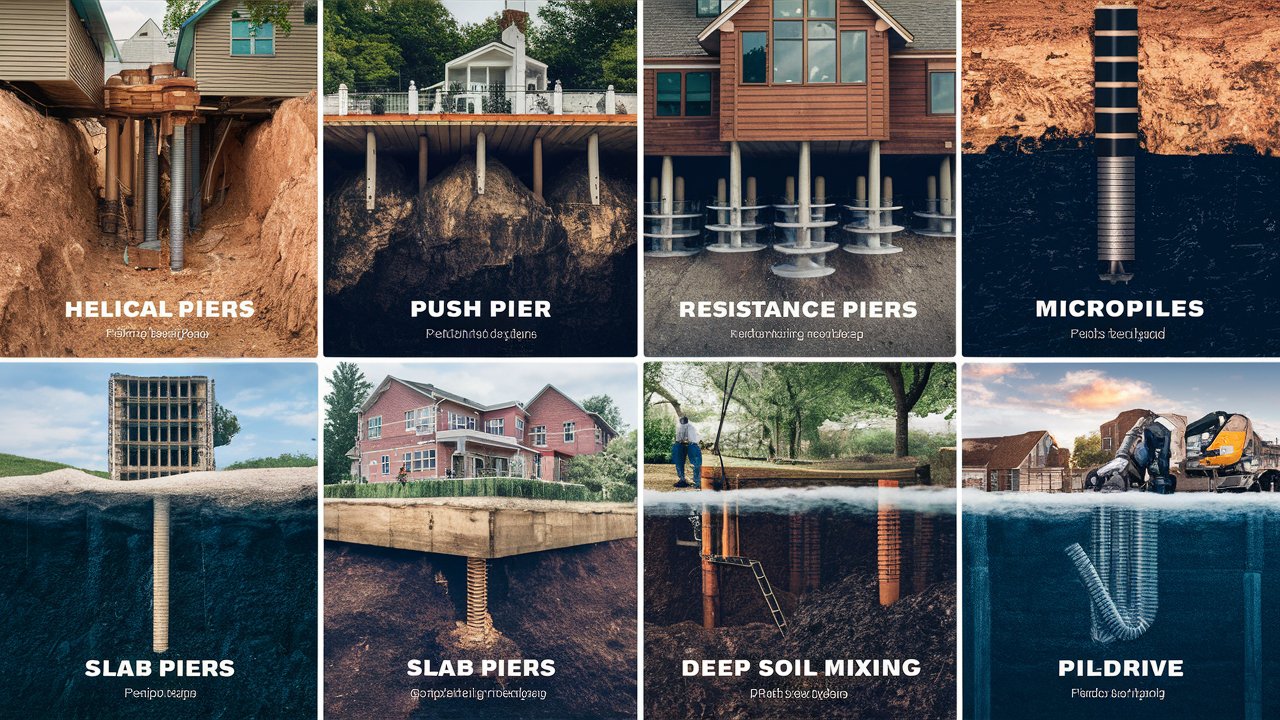

No responses yet